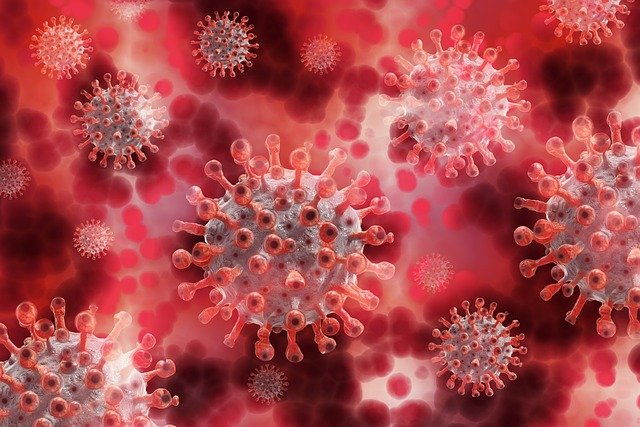Scientists are continuing to work towards understanding the long-lasting consequences of SARS-CoV-2 infection. Using artificial intelligence, a team of researchers found that multisystem inflammatory syndrome (MIS-C), a post-COVID condition, induces the same immune response as Kawasaki Disease (KD) and SARS-CoV-2 infection.1
However, MIS-C is characterized by a more severe immune response than KD. Researchers hope their findings will help guide clinicians when treating each condition.
What is MIS-C?
Multisystem inflammatory syndrome, or MIS-C, is a rare condition occurring in children and adolescents post-SARS-CoV-2 exposure – the virus causing COVID-19. The first known cases of MIS-C arose in the United Kingdom in April 2020, at the start of the COVID-19 pandemic.2
Symptoms of MIS-C include fever, rash, gastrointestinal symptoms, and high levels of SARS-CoV-2 antibodies.1 Children can also experience dilation of the coronary arteries – the blood vessels supplying the heart with blood – and myocardial dysfunction – irregularities in the heart muscle. Symptoms in children and adolescents with MIS-C usually start within 4-6 weeks post-SARS-CoV-2 exposure.
MIS-C and Kawasaki Disease share similar symptoms
Kawasaki Disease, or KD, is an inflammatory condition usually seen in younger children. Like MIS-C, it is a rare condition. Current understanding suggests that KD may result from an immune response to infections caused by viruses, bacteria, fungi, and other environmental stimuli.1,3,4,5
MIS-C and KD may share similar cardiac symptoms, although KD can cause coronary artery aneurysms and heart attacks.6 Since MIS-C was only recently discovered in 2020, scientists have struggled to collect enough data to be able to definitively distinguish between MIS-C and KD.
Both MIS-C and Kawasaki Disease share the same immune response
The study authors, from the University of California San Diego, identified a gene sequence, or “gene signature”, common to many viral pandemics.7 More than 45,000 datasets of viral pandemics were analyzed to identify a sequence that has been conserved in many viral pandemics including COVID-19, the avian flu, and influenza. This viral pandemic signature (ViP) contains 166 genes.
This signature contains information regarding the immune response elicited by the virus’ host – humans. The ViP gene sequence launches an immune response whereby the epithelial cells – skin cells – and myeloid cells – a type of immune cell – in the lungs activate the IL15/IL15RA cytokine pathway.1
Cytokines are proteins that work with the immune system to help the body fight disease.
The IL15/IL15RA cytokine pathway activates an immune response through increasing natural killer cells and some types of T-cells in the body.8 These cells act to contain and clear an infection.
Through analyzing blood and tissue samples of patients with KD and MIS-C, researchers confirmed that both conditions contain this ViP and act through the IL15/IL15RA pathway.1 Thus, both conditions elicit the same immune response involving this immune pathway.
MIS-C launches a more severe immune response than KD
Within the ViP, a 20 gene sequence was identified that relates the viral infection to the severity of illness, the sViP. In both KD and MIS-C patients, this sViP sequence accurately predicted disease severity, measured by the occurrence of coronary artery aneurysms and myocardial (heart muscle) dysfunction, respectively.
This sViP, along with the ViP, was found in higher levels in MIS-C patients than KD patients. Thus, the MIS-C immune response is more severe than that of KD.
MIS-C and KD do have clinical differences
The study group analyzed the levels of cytokines in MIS-C and KD patients; levels of certain cytokines, including TNF-alpha and IFN-gamma, were significantly higher for MIS-C than KD. IL1-beta was also higher, but this difference was not significant.
These results suggest that therapeutics targeting the TNF-alpha and IL1-beta pathways may help treat MIS-C.
Further analysis revealed that MIS-C is also distinguishable from KD by low eosinophil levels (a type of white blood cell that helps fight disease), and the occurrence of thrombocytopenia (low platelet count). These metrics can be determined using a simple blood test.
“The sooner we can identify and understand the child’s inflammatory condition, the better we can tailor our delivery of life-saving support,”6 Jane C. Burns said, who is co-author of the study and a pediatrician at Rady Children’s Hospital-San Diego.
Debashis Sahoo, co-author of the ViP study and associate professor of pediatrics at UC San Diego School of Medicine commented on these findings, “We believe our findings have a high potential to impact clinical trial planning immediately, and also shape clinical guidelines and patient care down the line”.6
References
- Ghosh, P. et al. (2022). An Artificial Intelligence-guided signature reveals the shared host immune response in MIS-C and Kawasaki disease. Nature Communications; 13(2687). Doi: 10.1038/s41467-022-30357-w.
- Riphagen, S., et al. (2020). Hyperinflammatory shock in children during COVID-19 pandemic. Lancet; 395(10237): 1607–1608. Doi: 10.1016/S0140-6736(20)31094-1.
- Nakamura, A., K. Ikeda, and K. Hamaoka. (2019). Aetiological significance of infectious stimuli in Kawasaki disease. Frontiers in Pediatrics;7: 1–9.
- Rodó, X. et al. (2014). Tropospheric winds from northeastern China carry the etiologic agent of Kawasaki disease from its source to Japan. Proceedings of the National Academy of Sciences USA; 111: 201400380.
- Manlhiot, C. et al. (2018). Environmental epidemiology of Kawasaki disease: linking disease etiology, pathogenesis and global distribution. PLoS ONE; 13(2): e0191087. Doi: 10.1371/journal.pone.0191087.
- Mlynaryk, N. (2022). COVID-19, MIS-C and Kawasaki disease share same immune response. EurekAlert! Accessed on May 18, 2022. Retrieved from https://www.eurekalert.org/news-releases/952614.
- Sahoo, D. et al. (2021). AI-guided discovery of the invariant host response to viral pandemics. EBioMedicine; 68: 103390. Doi: 10.1016/j.ebiom.2021.103390.
- Guo, Y. et al. (2017). Immunobiology of the IL-15-IL-15R[alpha] Complex as an Antitumour and Antiviral Agent. Cytokine & Growth Factor Reviews; 38: 10-21. Doi: 10.1016/j.ebiom.2021.103390.
Image by Gerd Altmann from Pixabay



